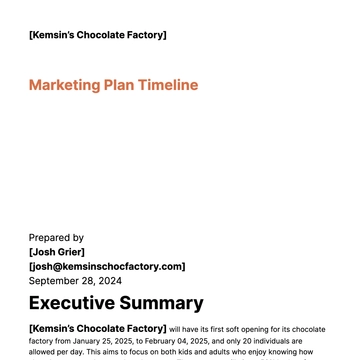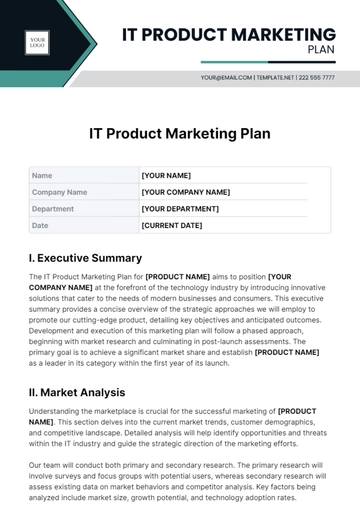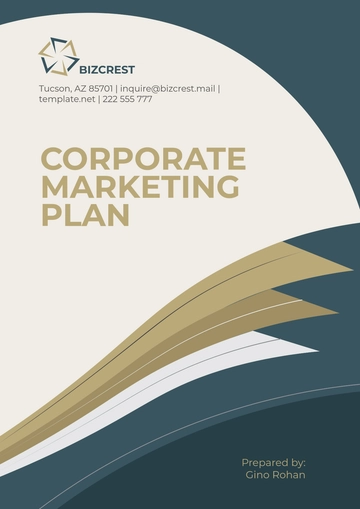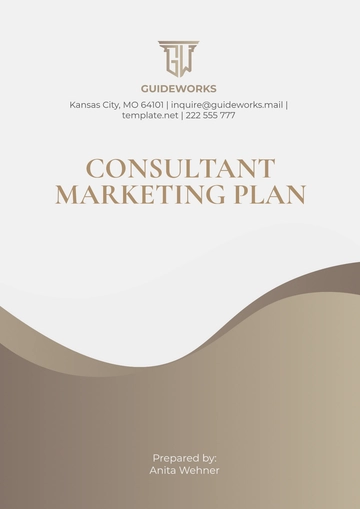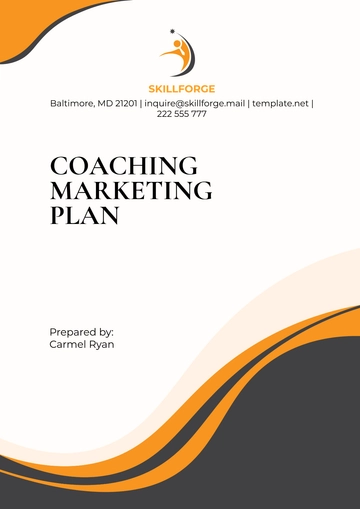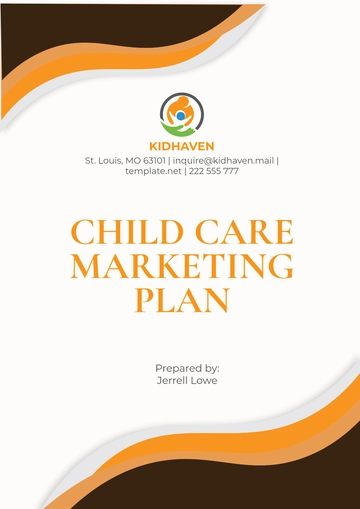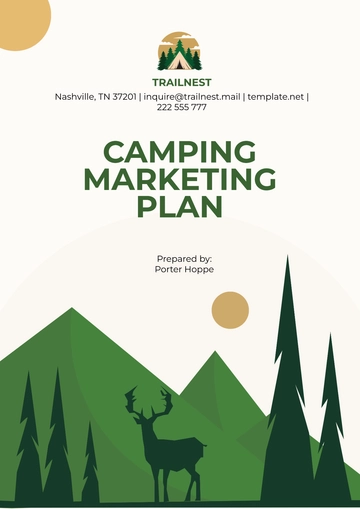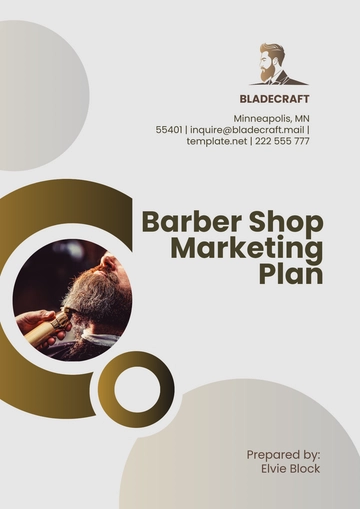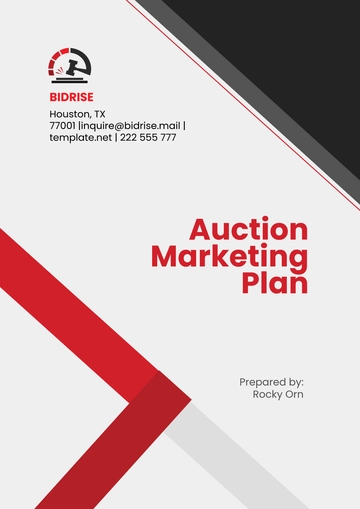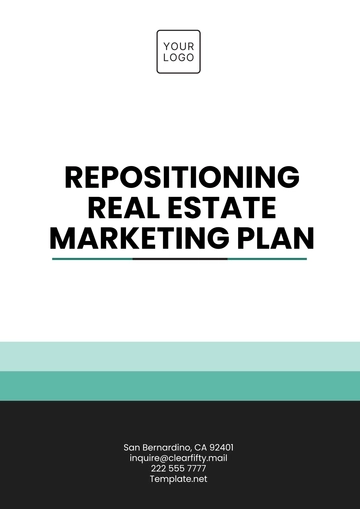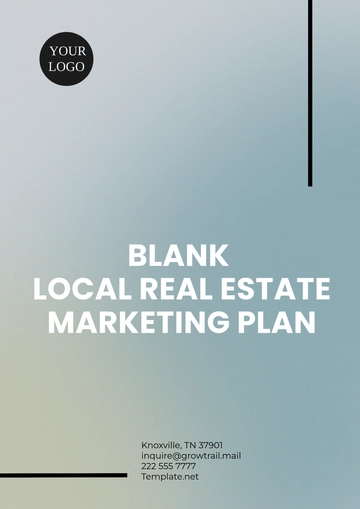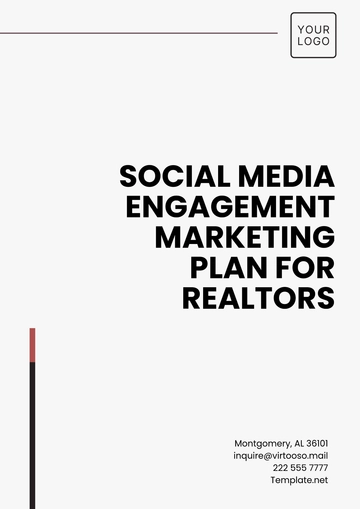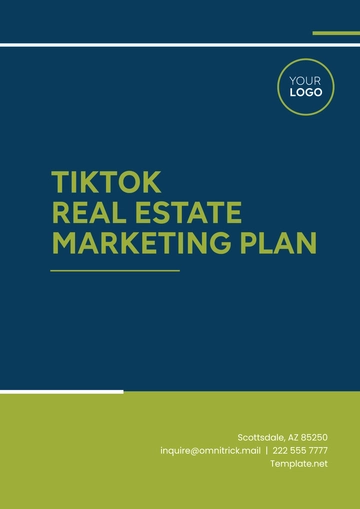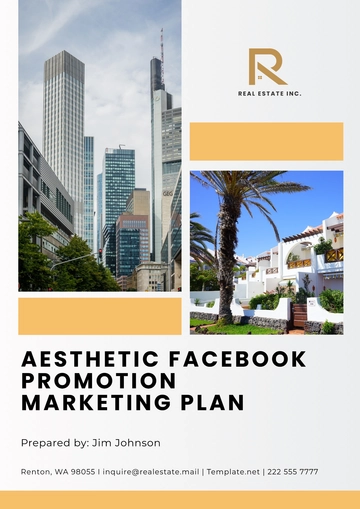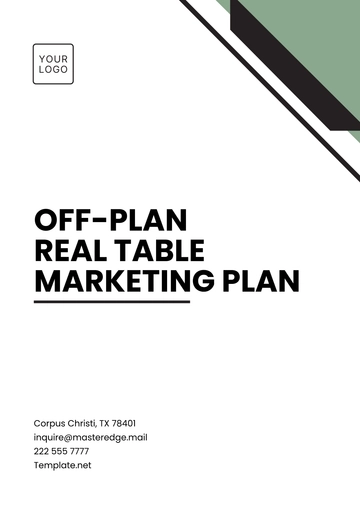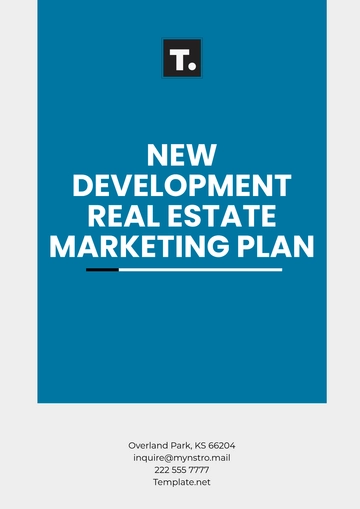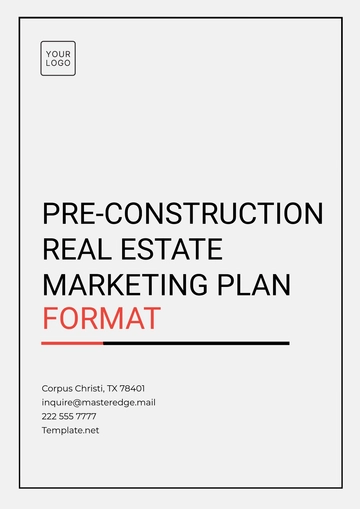Free Restaurant Marketing Plan
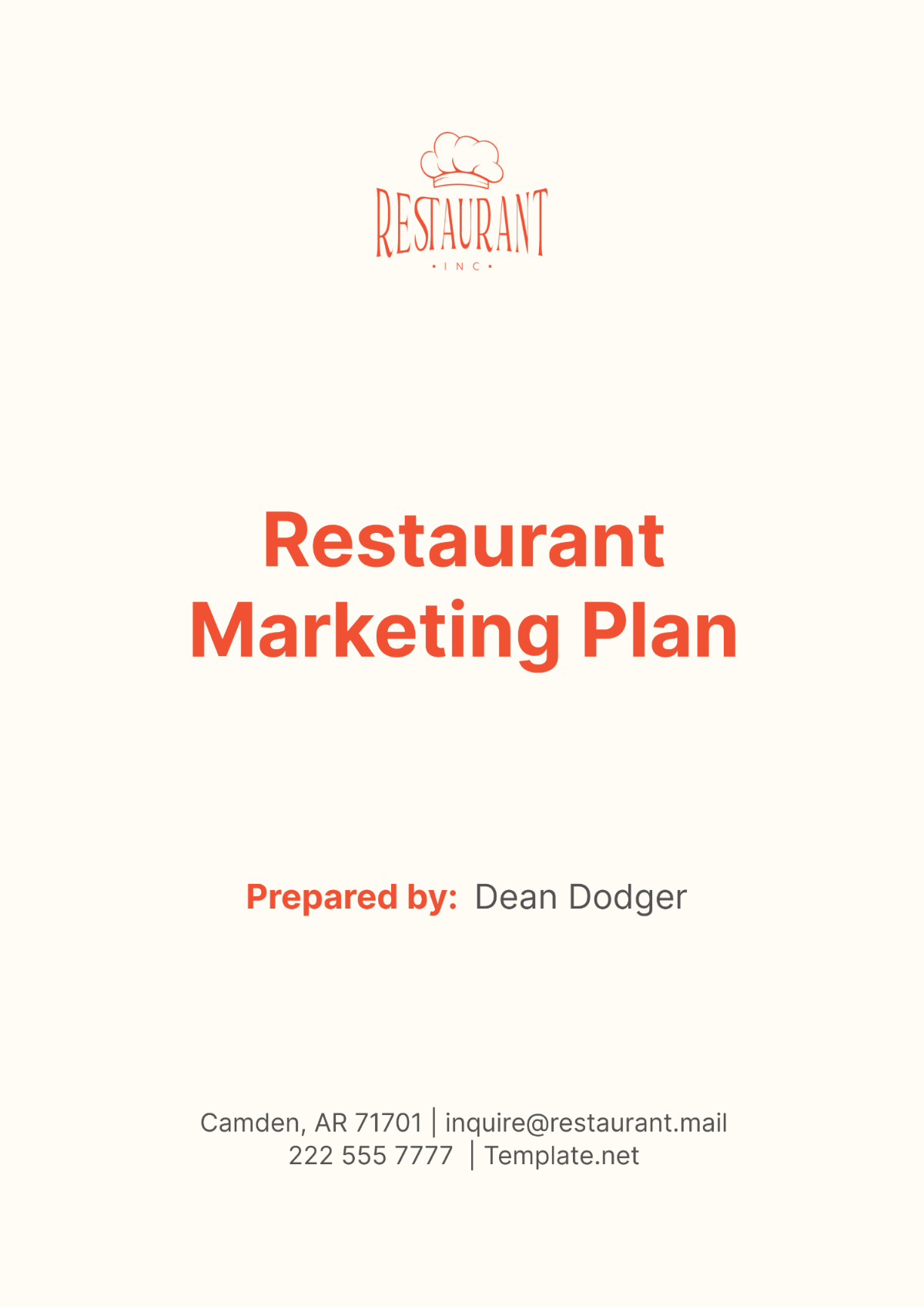
I. Executive Summary
Our Restaurant Marketing Plan outlines the strategies and actions needed to attract and retain customers, build brand awareness, and drive sales. This plan is designed to leverage both digital and traditional marketing channels to achieve our objectives and sustain growth. By understanding our target market and competitive landscape, we aim to position ourselves as a preferred dining destination.
Marketing Objectives
Increase brand awareness by 20% within the next year.
Achieve a 15% increase in customer retention rates.
Boost social media engagement by 25%.
Grow email subscriber list by 30%.
Increase monthly revenue by 10%.
II. Market Analysis
A. Industry Overview
The restaurant industry continues to be a significant contributor to the economy, with the U.S. market generating over $900 billion annually. The industry has seen a steady growth rate of 4% per year, driven by consumer demand for diverse dining experiences and convenience. The fast-casual segment, in particular, has experienced robust growth, with an annual increase of 8%. As consumers increasingly seek high-quality, quick dining options, the emphasis on fresh, locally sourced ingredients has become a key trend.
B. Target Market
Our target market consists of urban professionals, families, and food enthusiasts who value high-quality, locally sourced food in a modern and inviting atmosphere. These groups are characterized by a willingness to spend on premium dining experiences and a preference for sustainable and ethical food practices.
Demographics | Needs |
|---|---|
Age: 25-50 | High-quality, locally sourced meals |
Income: $60,000+ | Premium dining experiences |
Urban Professionals | Quick, convenient, yet upscale dining |
Families | Kid-friendly options and comfortable seating |
Food Enthusiasts | Innovative and unique menu offerings |
C. Competitive Analysis
Our competitive landscape includes several well-established restaurants, each with its strengths and weaknesses. Understanding their market share and positioning helps us identify our unique advantages.
Competitor | Share | Strengths | Weaknesses |
|---|---|---|---|
A | 20% | Strong brand recognition | High prices |
B | 15% | Marketing campaigns | Service quality |
C | 10% | Menu options | Sustainability |
Our restaurant stands out due to our commitment to quality, sustainability, and a superior dining experience. We occupy a unique niche by emphasizing locally sourced ingredients and innovative menu offerings, which resonate with our target market.
D. SWOT Analysis
Our SWOT analysis identifies internal strengths and weaknesses, as well as external opportunities and threats, helping us develop strategies to capitalize on our strengths and mitigate our weaknesses.
Category | Details |
|---|---|
Strengths | High-quality, locally sourced ingredients |
Strong customer loyalty and satisfaction | |
Unique and innovative menu offerings | |
Weaknesses | Higher operational costs due to premium ingredients |
Limited brand recognition outside the local area | |
Opportunities | Growing demand for sustainable and ethical dining options |
Potential to expand catering services | |
Increasing use of digital marketing and online ordering | |
Threats | Intense competition from established and new restaurants |
Economic downturns affecting consumer spending | |
Supply chain disruptions impacting ingredient availability |
Our strengths in providing high-quality, locally sourced meals and maintaining strong customer satisfaction give us a competitive edge. However, we must address our higher operational costs and limited brand recognition to fully capitalize on growth opportunities. By leveraging the growing demand for sustainable dining and expanding our digital marketing efforts, we can mitigate the threats posed by competition and economic fluctuations.
III. Branding Strategy
A. Brand Identity
Our brand identity reflects our commitment to providing high-quality, locally sourced meals in a modern and inviting atmosphere. We aim to create a unique dining experience that resonates with our target market and sets us apart from competitors.
Brand Element | Specifics |
|---|---|
Logo | A modern, sleek design featuring natural elements |
Colors | Earth tones (green, brown) to reflect sustainability |
Typography | Clean, easy-to-read fonts |
Tagline | "Fresh. Local. Inspired." |
Imagery | High-quality photos of our dishes and local sourcing |
B. Brand Positioning
We position ourselves as a premium dining destination that offers a unique combination of locally sourced, high-quality meals and a modern, comfortable atmosphere. Our focus on sustainability and innovation in our menu offerings appeals to our target market of urban professionals, families, and food enthusiasts. Our brand positioning aims to capture a 10% market share within the first year of this marketing plan's implementation.
C. Brand Voice and Tone
Our brand voice and tone are designed to convey our commitment to quality, sustainability, and exceptional customer service. We aim to communicate in a friendly, approachable, and knowledgeable manner across all marketing channels. Guidelines for communication style:
Friendly and Warm: Use a conversational tone that makes customers feel welcome and valued.
Knowledgeable and Informative: Provide clear, accurate information about our menu, sourcing practices, and sustainability efforts.
Inspiring and Motivational: Encourage customers to embrace sustainable dining and explore new flavors.
Consistent and Cohesive: Maintain a consistent tone across all platforms and materials.
IV. Marketing Strategies
A. Product Strategy
Our product strategy focuses on offering a diverse and innovative menu that highlights fresh, locally sourced ingredients. We aim to provide a memorable dining experience that caters to various dietary preferences and tastes.
Appetizers
Seasonal Soup
Farmhouse Salad
Artisan Cheese Board
Crispy Calamari
Entrees
Grilled Salmon with Quinoa Salad
Herb-Roasted Chicken with Seasonal Vegetables
Grass-Fed Beef Burger with Sweet Potato Fries
Vegan Mushroom Risotto
Desserts
Flourless Chocolate Cake
Seasonal Fruit Tart
House-Made Ice Cream
Beverages
Craft Cocktails
Local Craft Beers
Organic Wines
Freshly Squeezed Juices
B. Price Strategy
Our pricing strategy is designed to reflect the quality of our offerings while remaining competitive within the market. We use a value-based pricing approach, ensuring that customers feel they are receiving excellent value for their money.
Menu Item | Price (USD) |
|---|---|
Seasonal Soup | $8 |
Farmhouse Salad | $10 |
Artisan Cheese Board | $15 |
Crispy Calamari | $12 |
Grilled Salmon with Quinoa | $25 |
Herb-Roasted Chicken | $22 |
Grass-Fed Beef Burger | $18 |
Vegan Mushroom Risotto | $20 |
Flourless Chocolate Cake | $9 |
Seasonal Fruit Tart | $8 |
House-Made Ice Cream | $7 |
Craft Cocktails | $12 |
Local Craft Beers | $8 |
Organic Wines | $10 |
Freshly Squeezed Juices | $6 |
C. Place Strategy
Our place strategy focuses on ensuring that our restaurant is conveniently located and easily accessible to our target market. Our primary location is in a bustling downtown area known for its vibrant dining scene and high foot traffic. This prime location offers excellent visibility and accessibility, which are crucial for attracting our target demographic of urban professionals, families, and food enthusiasts.
D. Promotion Strategy
Our promotion strategy leverages a mix of digital and traditional marketing channels to build brand awareness, attract new customers, and retain existing ones.
Digital Marketing: Utilize social media platforms (Instagram, Facebook, Twitter) to showcase our menu, promote events, and engage with customers. Implement SEO and PPC campaigns to increase online visibility and attract new customers.
Traditional Advertising: Use local print media, radio spots, and outdoor advertising (billboards, transit ads) to reach potential customers in the area.
Community Engagement: Host and sponsor local events, participate in community activities, and collaborate with local businesses to build strong community ties and enhance brand reputation.
Customer Loyalty Programs: Develop and implement a customer loyalty program that rewards repeat customers with discounts, special offers, and exclusive event invitations.
Public Relations: Engage with local media to secure press coverage and leverage influencers to review and promote our restaurant.
Email Marketing: Send out regular newsletters with updates on menu changes, special promotions, and events to keep customers informed and engaged.
V. Digital Marketing
A. Website Strategy
Our website serves as the central hub for our digital presence, providing visitors with essential information about our restaurant. The website will feature a user-friendly design, ensuring easy navigation and accessibility across all devices. Key functionalities include an online reservation system, menu browsing, event calendar, and an integrated blog for sharing news and updates. High-quality images and engaging content will highlight our commitment to quality and sustainability, encouraging visitors to explore our offerings and visit our restaurant.
B. SEO
Our SEO strategy aims to improve our website's visibility on search engines, driving organic traffic and increasing brand awareness. We will implement keyword optimization, focusing on terms related to our cuisine, location, and unique selling points. Regularly updating our blog with relevant content, optimizing meta tags and descriptions, and building high-quality backlinks will further enhance our search engine ranking. Additionally, we will ensure our website is mobile-friendly and fast-loading to meet search engine criteria.
C. Social Media Marketing
Social media platforms will be used to engage with our audience, showcase our menu, and promote events. We will utilize Instagram, Facebook, and Twitter to share high-quality images, behind-the-scenes content, and customer testimonials. Engagement strategies include responding promptly to comments and messages, hosting contests and giveaways, and collaborating with influencers to reach a broader audience. Regular updates and interactive posts will keep our followers engaged and informed about new offerings and promotions.
D. Email Marketing
Our email marketing strategy will focus on building and maintaining a strong subscriber list. We will send out bi-weekly newsletters featuring updates on menu changes, special promotions, upcoming events, and exclusive offers. Content will be personalized and segmented to cater to different customer preferences and behaviors. By providing valuable and relevant information, we aim to keep our customers engaged and encourage repeat visits.
VI. Traditional Advertising
A. Print Advertising
Print advertising will be utilized to reach local audiences through newspapers, magazines, and flyers. We will design eye-catching ads that highlight our unique offerings and seasonal promotions. Distribution will be targeted to areas with high foot traffic and readership, ensuring maximum visibility and impact.
B. Radio and TV
Radio and TV advertising will be used to create broader awareness of our brand. We will develop a schedule for airing our ads during peak times, such as morning and evening commutes for radio, and prime-time slots for TV. These ads will focus on our unique selling points, special promotions, and events, aiming to attract a wide range of potential customers.
C. Outdoor Advertising
Outdoor advertising will include billboards, transit ads, and signage to capture the attention of passersby. Strategic placement in high-traffic areas, such as near shopping centers, main roads, and public transportation hubs, will ensure our ads are seen by a large audience. The designs will be visually appealing and convey our brand message clearly and concisely.
D. Public Relations
Our public relations strategy will involve building strong relationships with local media, bloggers, and influencers. We will regularly issue press releases to announce new menu items, special events, and milestones. Hosting media events and tastings will provide opportunities for journalists and influencers to experience our offerings firsthand, resulting in positive coverage and increased visibility. Engaging in community activities and charitable events will further enhance our reputation and strengthen our ties with the local community.
VII. Budget and Resources
A. Marketing Budget
Our marketing budget is designed to effectively allocate resources across various channels to maximize our reach and impact. We have carefully planned our budget to cover both digital and traditional marketing strategies, ensuring a balanced approach to our promotional efforts.
Marketing Activity | Cost (USD) |
|---|---|
Website Development | $10,000 |
SEO and Content Marketing | $5,000 |
Social Media Marketing | $8,000 |
Email Marketing | $3,000 |
Print Advertising | $6,000 |
Radio and TV Advertising | $15,000 |
Outdoor Advertising | $7,000 |
Public Relations | $4,000 |
Community Engagement | $2,000 |
Miscellaneous | $3,000 |
Total | $63,000 |
B. Resource Allocation
Resource allocation involves assigning specific roles and responsibilities to our team members and any external partners. This ensures that all marketing activities are efficiently managed and executed.
Resource | Responsibility |
|---|---|
Marketing Manager | Oversee all marketing activities |
Digital Marketing Specialist | Manage website, SEO, and social media |
Content Creator | Develop content for blog, email, social media |
Graphic Designer | Design ads, promotional materials |
PR Specialist | Handle media relations and press releases |
Event Coordinator | Organize community and promotional events |
External Agencies | Support for SEO, advertising, and PR |
C. Timeline
Our timeline outlines the steps and milestones for implementing our marketing strategies. This ensures that all activities are executed in a timely manner, contributing to our overall marketing objectives.
Step | Timeline |
|---|---|
Website Redesign | Q1 |
SEO Implementation | Q1 |
Social Media Campaigns | Ongoing, monthly |
Email Marketing Campaigns | Bi-weekly |
Print Advertising | Q2 and Q4 |
Radio and TV Advertising | Q2 and Q3 |
Outdoor Advertising | Q2 and Q3 |
PR Campaigns | Ongoing, quarterly |
Community Engagement Events | Q2 and Q3 |
Budget Review and Adjustment | End of each quarter |
VIII. Measurement and Evaluation
To ensure the effectiveness of our marketing efforts, we will implement a robust measurement and evaluation system. This will involve tracking key performance indicators (KPIs) and comparing them against our target values.
Metric | Target Value |
|---|---|
Increase in Website Traffic | 20% |
Social Media Engagement | 25% increase |
Email Open Rates | 30% |
Customer Retention Rate | 15% increase |
Monthly Revenue Growth | 10% |
New Customer Acquisition | 20% increase |
PR and Media Mentions | 15 per quarter |
Evaluations will occur at the end of each quarter, allowing us to assess the effectiveness of our marketing strategies and make necessary adjustments. Monthly progress reports will be generated to track ongoing performance, and bi-weekly team meetings will be held to review specific campaigns and initiatives. This continuous monitoring and feedback loop will ensure that we stay on track to achieve our marketing objectives and can quickly respond to any challenges or opportunities that arise.
- 100% Customizable, free editor
- Access 1 Million+ Templates, photo’s & graphics
- Download or share as a template
- Click and replace photos, graphics, text, backgrounds
- Resize, crop, AI write & more
- Access advanced editor
Boost your restaurant’s visibility with the editable and customizable Restaurant Marketing Plan Template from Template.net. This comprehensive template covers all essential marketing strategies and tactics. Editable in our AI Editor tool, it allows you to tailor each section to your specific goals. Enhance your marketing efforts with this detailed and user-friendly plan template.

